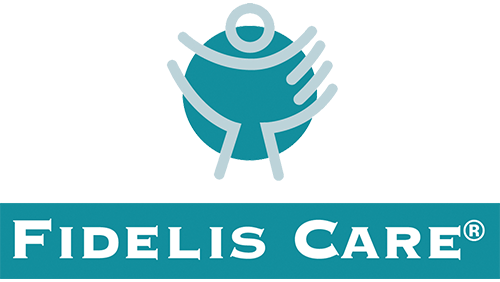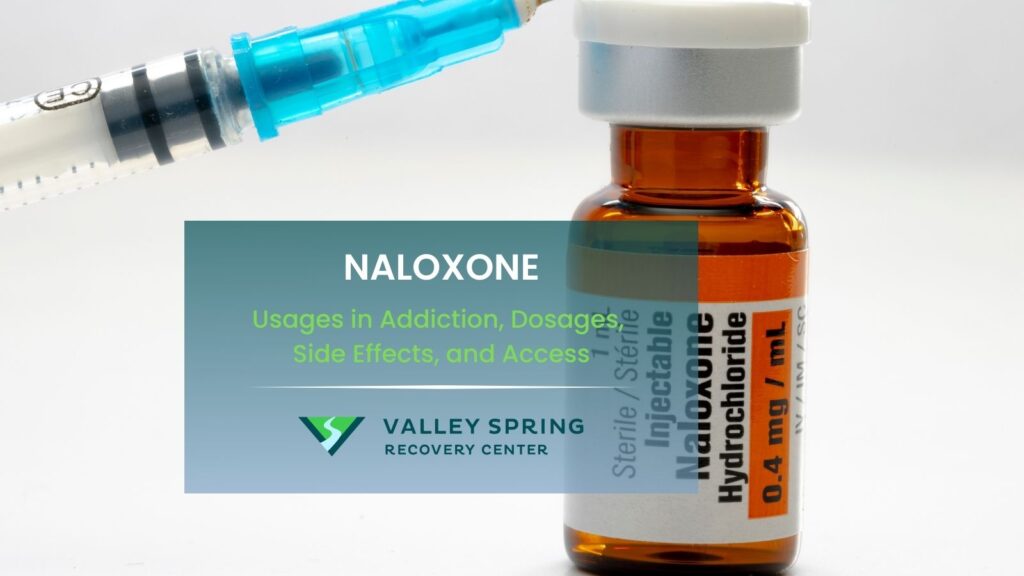What Is the Michigan Alcohol Screening Test (MAST) and How Does It Work?

The Michigan Alcohol Screening Test (MAST) is a trusted tool for detecting alcohol dependence and risky drinking behavior. Clinicians describe it as the MAST Michigan alcohol screening test or simply the MAST test.
The MAST alcohol screening process relies on a series of yes-or-no questions that form the basis of the MAST assessment. Through structured Michigan alcohol screening test scoring, providers do a MAST score interpretation that reflects the likelihood and severity of alcohol-related problems.
Accurate MAST scoring and clear MAST scoring interpretation allow both individuals and professionals to understand alcohol’s impact on personal, legal, and professional life. The MAST alcohol test continues to guide early detection and treatment planning.
What Is the Michigan Alcohol Screening Test (MAST)?
The Michigan Alcohol Screening Test (MAST) is an alcohol screening tool. Dr. Melvin L. Selzer developed it in 1971. MAST assesses alcohol dependence and addiction. The test uses self-report questions to measure the impact of alcohol use on behavior, relationships, and daily life.
MAST shows strong reliability and validity. It identifies long-term drinking problems. Newer tools like the AUDIT exist. MAST remains valuable in clinical and research settings. It evaluates alcohol misuse severity and guides treatment decisions.

Did you know most health insurance plans cover substance use disorder treatment? Check your coverage online now.
What Are the Main Components of the MAST?
The main components of the MAST assess different aspects of alcohol use, including self-appraisal of drinking, recognition of alcohol-related problems, concern from others, and issues at work or with the law. These factors describe drinking patterns, consequences, and attempts to address addiction.

The main components of the MAST are as follows:
- Self-Appraisal of Alcohol Use: This component of MAST evaluates an individual’s perception of their drinking habits, including how and how much they consume alcohol. It helps determine whether they acknowledge any problematic patterns.
- Recognition of Alcohol-Related Problems: This assesses whether the individual is aware of the harmful impact alcohol has on their life, such as difficulties in relationships, work, or health. Awareness is a key step toward seeking help.
- Concern from Others About Drinking: This examines whether friends, family, or colleagues have expressed worry about the person’s drinking habits. External concern signals a deeper issue that the individual does not fully recognize.
- Legal and Work Issues: This addresses alcohol-related consequences such as job loss, absenteeism, poor performance, or legal troubles like DUIs, which indicate a severe impact on daily responsibilities.
- Health and Medical Consequences: This component of MAST looks at the physical effects of alcohol use, including liver disease, high blood pressure, or other alcohol-induced medical conditions. It helps gauge the severity of alcohol dependence.
- Attempts to Control or Quit Drinking: This assesses whether the individual has tried to reduce or stop drinking, including any unsuccessful attempts, which indicate addiction.
- Guilt and Blackouts: This examines feelings of remorse about drinking behaviors and experiences of alcohol-induced memory loss, both of which suggest problematic alcohol use.
- Social and Family Impact: This measures how alcohol consumption has affected personal relationships, including conflicts, isolation, or breakdowns in family dynamics.
- Treatment History: This considers whether the individual has sought professional help for alcohol addiction, including detox, rehabilitation, or therapy, providing insight into their recovery journey.
What Types of Questions are Asked in the MAST?
Types of questions in the MAST include behavioral, social, legal, and medical aspects of alcohol use, focusing on alcohol dependence and its consequences. MAST questions use a yes/no format. They focus on behavior, health, social issues, work problems, and medical consequences. Each question explores the relationship between alcohol use and its impact.

The following are the types of questions asked in the MAST:
- Behavioral Questions: These assess drinking patterns and their consequences, such as binge drinking or losing control. For example, “Have you ever felt you should cut down on your drinking but found it difficult?”
- Social and Family Impact Questions: These questions explore how drinking affects relationships and social interactions. For example, “Has your drinking ever caused problems with your spouse or family?”
- Legal and Work-Related Questions: These determine if alcohol use has led to job loss, absenteeism, or legal troubles. For example, “Have you ever been arrested for drunk driving or other alcohol-related offenses?”
- Medical and Health Questions: These assess the physical health consequences of alcohol use. For example, “Have you ever experienced withdrawal symptoms like shaking or sweating when you stop drinking?”
- Concern from Others Questions: These evaluate whether family, friends, or coworkers have expressed concern about the individual’s drinking. For example, “Have people annoyed you by criticizing your drinking?”
- Attempts to Quit or Control Drinking Questions: These gauge past efforts to stop or reduce drinking. For example, “Have you ever tried to stop drinking but found you couldn’t?”
- Guilt and Blackouts Questions: These assess psychological effects like remorse or memory loss. For example, “Have you ever had a complete loss of memory for some drinking episodes?”
How Does the Michigan Alcohol Screening Test Work?
The Michigan Alcohol Screening Test works through a step-by-step process. Individuals take the test alone or with a clinician. They answer yes/no questions. Each “yes” earns a score. Higher scores show a higher risk of alcohol dependence. Clinicians use high scores to recommend treatment or further evaluation, as studied by Westermeyer, Joseph, et al. 2004, titled “Michigan Assessment-Screening Test for Alcohol and Drugs (MAST/AD): Evaluation in a Clinical Sample.”

The Michigan Alcohol Screening Test works in the following way:
- Administration of the Test: Individuals take the test independently or with a clinician who offers clarification.
- Answering Yes/No Questions: Each question addresses alcohol use, consequences, and behavior patterns.
- Scoring the Responses: Points are assigned to “yes” answers, with higher scores indicating greater risk.
- Interpreting the Results: Total scores are used to classify alcohol dependence.
- Follow-Up and Intervention: High scores prompt recommendations for treatment or further evaluation.
Contact us today to schedule an initial assessment or to learn more about our services. Whether you are seeking intensive outpatient care or simply need guidance on your drug addiction journey, we are here to help.
What Is the Scoring System for MAST?
The scoring system for MAST is based on the number of “yes” responses, with each affirmative answer contributing to the total score. According to Comorbidity Guidelines, “MAST: Scoring and interpretation,” higher scores indicate a greater likelihood of alcohol dependence, helping to classify individuals based on the severity of their alcohol-related issues.
The scoring system for MAST is explained below:
- 0 to 3 Points: No Significant Problem: A low score suggests that the individual does not exhibit signs of alcohol dependence or problematic drinking behaviors.
- 4 to 5 Points: Early or Potential Alcohol Problem: This range indicates a possible emerging issue with alcohol use. The individuals are at risk, and monitoring their drinking habits is necessary.
- 6 to 9 Points: Problematic Drinking: A moderate score suggests the presence of alcohol-related issues that lead to dependence. Seeking further evaluation or professional guidance is beneficial.
- 10 or More Points: High Probability of Alcohol Dependence: A high score strongly suggests alcohol addiction, requiring intervention, treatment, or professional help to address the issue effectively.
How Long Does It Take to Complete the MAST?
It takes approximately 10 to 15 minutes to complete the MAST, depending on the individual’s reading speed and response time. The test consists of 22 yes/no questions, making it relatively quick and easy to administer. In some cases, shorter versions of the MAST, such as the 10-question brief MAST (BMAST), are completed in about 5 minutes.
How Is the MAST Applied in Alcohol Addiction Treatment?
The MAST is applied in alcohol addiction treatment by helping clinicians assess the severity of alcohol dependence, identify risk factors, and develop personalized recovery plans. MAST tracks progress, ensuring that alcohol addiction treatment approaches remain effective.

The MAST is applied in alcohol addiction treatment in the following way:
- Assessing Severity of Alcohol Dependence: The MAST test helps determine whether an individual has mild, moderate, or severe alcohol use disorder, allowing clinicians to tailor treatment accordingly.
- Informing Treatment Plans: Based on MAST results, professionals recommend appropriate interventions, such as therapy, medication, or inpatient rehab, to address the individual’s specific needs.
- Identifying Triggers and Risk Factors: The MAST test reveals behavioral and environmental factors contributing to alcohol use, helping individuals and therapists recognize and manage triggers effectively.
- Monitoring Recovery Progress: By administering the MAST periodically, clinicians evaluate whether treatment works and adjust strategies to support long-term sobriety.
- Supporting Self-Reflection: The MAST test encourages individuals to recognize their drinking patterns and the consequences of alcohol use, fostering motivation for change and commitment to recovery.
Rediscover Life at Valley Spring Recovery Center
Get the compassionate support you deserve. We're here to help you reclaim joy, wellness, and a brighter future.
Verify Benefits
What Are the Benefits of the Michigan Alcohol Screening Test?
The benefits of the MAST are its accuracy, simplicity, accessibility, and ability to detect long-term alcohol issues. This validated screening tool provides quick results, making it a practical resource for early intervention and long-term assessment of alcohol dependence.

The benefits of the MAST are as follows:
- High Accuracy and Validity: As a validated screening tool, the MAST effectively identifies individuals struggling with alcohol dependence, ensuring reliable assessments that help guide treatment decisions.
- Simplicity and Quick Results: The test consists of straightforward yes/no questions, making it easy to complete in about 10 to 15 minutes while providing quick results for immediate evaluation.
- Early Intervention and Prevention: By detecting problematic drinking patterns early, the MAST allows for timely intervention, reducing the risk of severe alcohol dependence and its long-term consequences.
- Accessibility in Different Formats: The test is available in paper and online versions, making it widely accessible for self-assessment or use by healthcare professionals in clinical settings.
- Detection of Long-Term Alcohol Issues: Unlike some screening tools that focus on recent alcohol use, the MAST assesses lifetime drinking patterns, helping identify long-term alcohol dependence and its effects.
What Are the Limitations of Using the Michigan Alcohol Screening Test?
The limitations of using the Michigan Alcohol Screening Test are its reliance on self-reported answers, lack of real-time behavioral assessment, and potential difficulty in detecting mild drinking problems. While the MAST is a widely validated tool, research on alcohol screening tests highlights the risk of self-report bias, where individuals underreport or misrepresent their drinking habits.
The limitations of using the Michigan Alcohol Screening Test are as follows:
- Self-Reporting Bias: The test relies on truthful answers, which are skewed by denial, stigma, or lack of awareness, leading to inaccurate results, as shown by Adong J, et al., 2019, titled “Social Desirability Bias Impacts Self-Reported Alcohol Use Among Persons With HIV in Uganda.”
- Lack of Real-Time Behavioral Assessment: The test evaluates past drinking behaviors, not immediate consumption patterns like binge drinking.
- Difficulty Detecting Mild Drinking Problems: MAST is more effective for moderate to severe dependence, but it misses early-stage or low-risk drinking.
- Focus on Lifetime Alcohol Use: The test does not reflect recent changes in drinking habits, limiting its effectiveness for short-term assessments.
Are There Different Versions of the MAST?
Yes, there are different versions of the MAST that have been modified for specific populations and settings. These include the Short Michigan Alcohol Screening Test (SMAST), a 13-question version for quicker assessments; the Brief MAST (bMAST), a 10-question version for rapid screening; the Michigan Alcohol Screening Test–Geriatric (MAST-G), which includes questions tailored for older adults; and the Military-Michigan Alcohol Screening Test (Mm-MAST), adapted for military personnel.
Who Should Take the Michigan Alcohol Screening Test?
Individuals who consume alcohol regularly, show signs of alcohol abuse, or experience negative consequences related to their drinking should take the Michigan Alcohol Screening Test. It is also beneficial for those undergoing mental health treatment, as alcohol dependence coexists with conditions like depression and anxiety. Healthcare providers use the MAST to assess patients with legal, work, or relationship issues linked to alcohol use, ensuring early intervention and appropriate treatment.
Is the MAST Suitable for All Age Groups?
No, the MAST is unsuitable for all age groups, as it was initially designed for adults and is not as effective for adolescents. While it is used with young adults, it does not fully capture teenagers’ unique drinking patterns. For seniors, a modified version called the Michigan Alcohol Screening Test–Geriatric (MAST-G) is available, considering age-related factors like medication interactions and health risks. Adolescents are better assessed using age-specific screening tools, such as the CRAFFT test, which is tailored to their developmental stage.
Can You Take the MAST Test Online?
Yes, you can take the MAST test online through various healthcare and addiction recovery websites. Online versions provide a convenient way for individuals to self-assess their alcohol use and determine if they need further evaluation.
Can MAST Be Used for Self-Assessment?
Yes, the MAST can be used for self-assessment, as it allows individuals to evaluate their alcohol use privately. However, because it relies on self-reporting, accuracy is affected by self-reporting bias, where individuals underreport or overestimate their drinking habits.
Does the MAST Diagnose Alcohol Use Disorder?
No, the MAST does not formally diagnose Alcohol Use Disorder (AUD). It is a screening tool that identifies individuals at risk of alcohol dependence, but a clinical diagnosis requires further assessment by a healthcare professional. According to the Diagnostic and Statistical Manual of Mental Disorders (DSM-5), diagnosing Alcohol Use Disorder involves evaluating multiple criteria, including withdrawal symptoms, tolerance, and impaired control over drinking, which go beyond what the MAST assesses.
Is the Michigan Alcohol Screening Test Reliable?
Yes, the MAST is a reliable tool for detecting alcohol dependence, with studies confirming its effectiveness in identifying long-term alcohol use issues. As studied in the Handbook of Developmental Neurotoxicology 1998, MAST has a sensitivity of 98% and a specificity of 95% with a cutoff score of 5 in identifying alcohol use disorders. It is combined with other screening tools, such as the AUDIT or CAGE questionnaire, for better accuracy.
How Accurate is the Michigan Alcohol Screening Test?
The MAST has a sensitivity rate of approximately 80 to 98% and a specificity rate of around 60 to 95%, depending on the population being tested. While it remains a widely used tool, newer screening instruments like the AUDIT have been shown to have higher accuracy in specific settings due to their focus on recent alcohol use rather than lifetime drinking history.
Is the MAST the most accurate alcohol addiction test?
The MAST is a highly reliable alcohol addiction test, but it isn’t a diagnostic tool on its own. It provides a score-based indication of how serious a person’s drinking problem may be. Clinicians often combine MAST with other assessments—like the AUDIT (Alcohol Use Disorders Identification Test) or clinical interviews—to confirm the diagnosis and plan treatment.
How Does MAST Differ from AUDIT?
The MAST and the AUDIT (Alcohol Use Disorders Identification Test) differ in their approach and focus. The MAST primarily assesses lifetime alcohol dependence, making it more suitable for identifying long-term addiction patterns. In contrast, the AUDIT evaluates recent alcohol use and associated risks, making it better for detecting early-stage problem drinking. The AUDIT includes questions on the frequency and quantity of drinking, whereas the MAST focuses more on social, legal, and health consequences.
How Does MAST Differ from the CAGE Questionnaire?
The MAST and CAGE Questionnaires differ in length, scope, and purpose. The CAGE questionnaire is a brief, four-question screening tool for identifying potential alcohol problems in primary care settings. The MAST, on the other hand, is more comprehensive, containing up to 22 questions that assess long-term alcohol dependence. While the MAST provides a more detailed evaluation, the CAGE questionnaire is preferred for quick screenings in medical or general healthcare environments.
Are you covered for treatment?
Valley Spring Recovery Center is an approved provider for Blue Cross Blue Shield and Cigna, while also accepting many other major insurance carriers.
Check Coverage Now!Can MAST be used to predict the severity of alcohol withdrawal?
Yes. While MAST itself doesn’t measure withdrawal symptoms, it provides valuable insight into the degree of alcohol dependence, which strongly correlates with withdrawal severity. Individuals with higher MAST scores are more likely to experience moderate to severe alcohol withdrawal, requiring medical supervision during detox.
Share This Post















